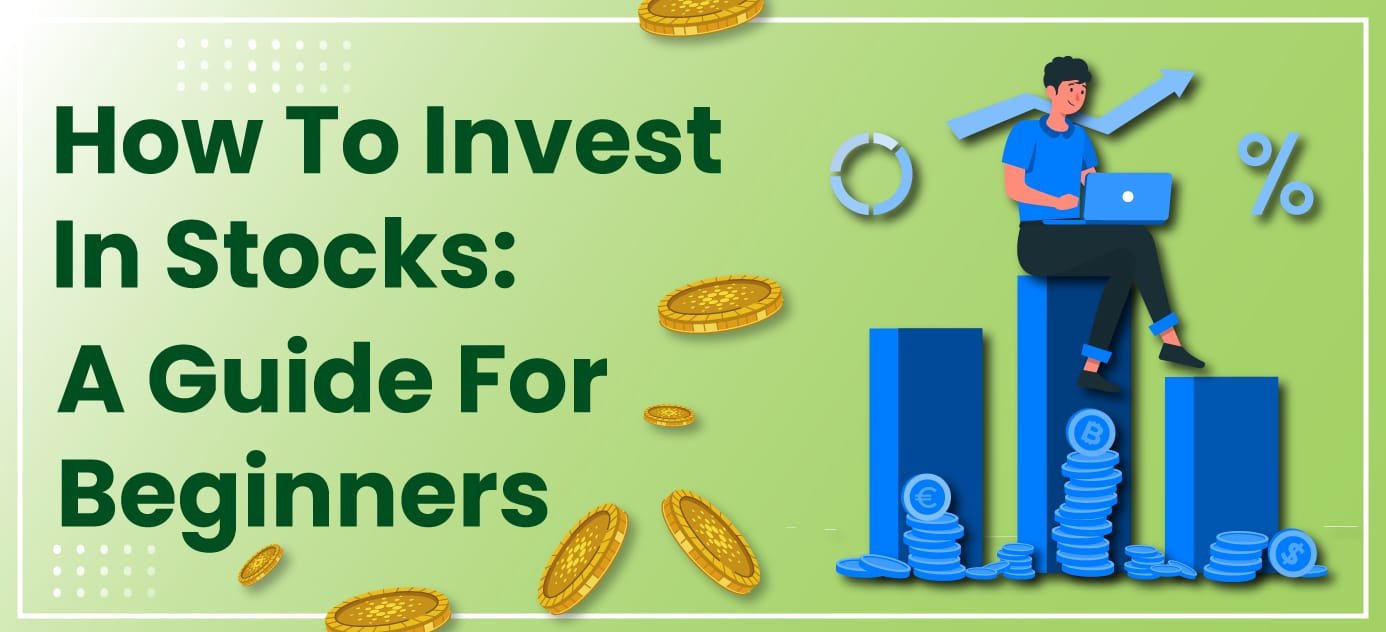How To Invest Money for Beginners?
Investing money is a powerful way to build wealth, secure your financial future, and achieve life goals. But if you’re just starting out, the process can feel overwhelming. With thousands of investment options, financial jargon, and market uncertainties, knowing where and how to start investing is the key to success.
This beginner’s guide is designed to simplify everything—from understanding basic investment concepts to selecting the right tools and strategies. Let’s break it down into practical steps so you can begin your investment journey with confidence.
Key Takeaways
- Start early to benefit from compounding.
- Set clear financial goals before investing.
- Begin with simple investments like mutual funds and ETFs.
- Diversify your portfolio to reduce risk.
- Avoid common mistakes like emotional investing and lack of research.
- Use SIPs to build disciplined investing habits.
- Review and adjust your investments regularly.
Why Should You Start Investing Early?
1. Power of Compounding
One of the biggest advantages of starting early is compound interest. This means you earn interest not just on your initial investment, but also on the interest it accumulates over time.
Example:
Investing ₹1,00,000 at 10% annually for 20 years will become ₹6,72,750. But if you wait 10 years to start, it becomes only ₹2,59,374.
2. Achieving Long-Term Goals
Whether it’s retirement, buying a house, or funding your child’s education, early investment helps you reach these goals with ease.
3. Risk Management
You can take calculated risks when you have time on your side, allowing recovery from market fluctuations.
Understanding Basic Investment Concepts
1. Risk and Return
Every investment involves some level of risk. Higher returns usually come with higher risk. Learn to balance the two according to your goals and comfort.
2. Diversification
Never put all your money in one place. Spread it across various assets like stocks, bonds, and mutual funds to reduce overall risk.
3. Liquidity
How quickly you can convert your investment into cash matters. Stocks are more liquid than real estate, for example.
4. Inflation
Your investment should at least beat inflation. If inflation is 6% and your savings grow at 4%, you’re losing money in real terms.
Setting Your Financial Goals
Start by asking yourself:
- What am I investing for?
- How much money do I need to reach my goal?
- When will I need the money?
Short-Term Goals (1–3 years)
- Emergency fund
- Vacation or gadget purchase
- Down payment for a car
Suitable Investments: Fixed Deposits, Liquid Funds
Medium-Term Goals (3–7 years)
- Higher education
- Home down payment
Suitable Investments: Debt Mutual Funds, Balanced Funds, Bonds
Long-Term Goals (7+ years)
- Retirement
- Wealth building
Suitable Investments: Stocks, Equity Mutual Funds, Real Estate, PPF
Types of Investments for Beginners
1. Stocks
Buying shares of a company means owning a piece of that company. Stocks offer high returns but can be volatile.
- Returns: 10%–15% annually (long-term average)
- Risks: High
- Best For: Long-term investors
2. Mutual Funds
These are professionally managed funds that pool money from multiple investors to buy stocks, bonds, etc.
- Types: Equity, Debt, Hybrid
- Returns: 8%–15% depending on fund type
- Best For: Those seeking diversification and professional management
3. Exchange-Traded Funds (ETFs)
Similar to mutual funds but traded like stocks. Low-cost and good for passive investors.
- Returns: Market-based
- Best For: Beginners who want diversified exposure
4. Fixed Deposits (FDs)
Offered by banks and financial institutions. Safe but lower returns.
- Returns: 5%–7% annually
- Best For: Conservative investors
5. Bonds
Debt instruments issued by governments or corporations. Provide regular interest.
- Returns: 6%–9%
- Risks: Credit and interest rate risk
- Best For: Income-seeking investors
6. Real Estate
Investing in land or property for rental income and appreciation.
- Returns: 8%–12% annually (varies by location)
- Cons: Low liquidity, high entry cost
- Best For: Long-term investors
7. Cryptocurrency
Digital currencies like Bitcoin and Ethereum.
- Returns: High but highly volatile
- Risks: Regulatory and market
- Best For: Tech-savvy and high-risk tolerance investors
Step-by-Step Guide: How to Start Investing

Step 1: Set Your Goals
Determine what you’re investing for and your time horizon.
Step 2: Know Your Risk Tolerance
Use online risk profiling tools or speak to a financial advisor.
Step 3: Build an Emergency Fund
Keep 3–6 months’ expenses in a liquid savings account or fund.
Step 4: Choose an Investment Platform
Options:
- Stockbrokers (Zerodha, Groww, Robinhood)
- Mutual fund platforms (ETMoney, Kuvera, Coin)
- Robo-advisors (Scripbox, Wealthfront)
Step 5: Start with SIPs (Systematic Investment Plans)
Investing a fixed amount monthly in mutual funds builds discipline and reduces market timing risk.
Step 6: Monitor and Rebalance
Review your portfolio every 6–12 months and make adjustments based on performance and goals.
Common Mistakes Beginners Should Avoid
❌ Investing Without a Goal
Having no clarity can lead to poor choices.
❌ Chasing Quick Returns
High-return schemes often carry hidden risks or scams.
❌ Putting All Money in One Asset
Diversification is key to risk management.
❌ Not Doing Research
Blindly following trends can be dangerous. Always understand what you’re investing in.
❌ Ignoring Fees and Taxes
Brokerage fees, fund expenses, and capital gains taxes eat into returns.
1. What Are the Best Investment Options for Beginners in 2025?
Description: A comparison of beginner-friendly investments like mutual funds, ETFs, fixed deposits, government bonds, and stocks.
- Subtopics: Risk analysis, expected returns, platforms to use, how to start small.
2. How Does Compound Interest Work in Investing?
Description: Explain the concept of compound interest, with calculators, examples, and its importance in long-term wealth creation.
- Subtopics: Daily vs. annual compounding, real-life projections, compounding in SIPs and retirement accounts.
3. Is SIP (Systematic Investment Plan) the Best Way to Start Investing?
Description: Explore how SIPs work, their benefits, how to choose the right fund, and how they help new investors grow steadily.
- Subtopics: SIP vs. lump sum, long-term examples, platforms to start SIPs, ideal amounts.
4. How to Invest in the Stock Market for Beginners?
Description: A complete step-by-step stock market investing guide for first-time investors.
- Subtopics: How to open a Demat account, types of stocks, blue-chip vs. small-cap, risk management.
5. Which Is Better: Mutual Funds or Direct Stock Investing for Beginners?
Description: Compare mutual funds and direct stock investing on cost, risk, control, and returns.
- Subtopics: Active vs. passive investing, fund manager role, decision-making, automation options.
6. What Is a Diversified Investment Portfolio and How to Build One?
Description: Show how to reduce risk and improve returns through asset diversification.
- Subtopics: Asset classes, sectoral diversification, domestic vs. international investing.
7. How to Avoid Common Beginner Investing Mistakes?
Description: List and explain typical mistakes new investors make and how to avoid them.
- Subtopics: Market timing, panic selling, over-diversifying, investing based on social media tips.
8. What Are Index Funds and Why Are They Great for Beginners?
Description: Explain index funds, their benefits, and why they are ideal for new investors.
- Subtopics: Nifty 50, Sensex funds, S&P 500, cost efficiency, performance vs. active funds.
9. What Is an Emergency Fund and Why Should You Create One Before Investing?
Description: Emphasize the need for financial safety before jumping into investments.
- Subtopics: How much to save, where to keep it, difference between saving and investing.
10. Can You Start Investing with ₹500 or Less?
Description: Teach readers how to start with small amounts through SIPs, digital gold, and micro-investing apps.
- Subtopics: Compound growth examples, consistent investing mindset, low-barrier platforms.
11. How to Create a Personal Financial Plan Before Investing?
Description: Guide to budgeting, goal-setting, debt repayment, and organizing finances before investing.
- Subtopics: 50/30/20 rule, financial health checklist, goal tracking tools.
12. How to Invest for Retirement as a Beginner in Your 20s or 30s?
Description: Long-term investing strategies for building a retirement corpus starting early.
- Subtopics: NPS, PPF, EPF, equity mutual funds, time value of money.
13. How Safe Is Investing for Beginners?
Description: Break down the myths around investment safety, risks, and frauds.
- Subtopics: Government-backed schemes, low-risk investments, spotting scams, using SEBI-registered platforms.
14. Should You Use a Robo-Advisor or Do It Yourself (DIY)?
Description: Compare automated investment tools with self-managed portfolios for beginners.
- Subtopics: Cost comparison, algorithmic asset allocation, top robo-advisors.
15. How to Start Investing as a Student or Part-Time Earner?
Description: Help young earners and students with low income begin investing early.
- Subtopics: Pocket-friendly options, learning platforms, side hustle investing, Financial literacy tips.
Also Read : What Are the Best Investment Plans for High Returns?
Conclusion
Investing doesn’t have to be intimidating. With the right knowledge, clear goals, and a long-term mindset, even beginners can create strong portfolios that deliver consistent returns. The most important step is to start. Don’t wait for the perfect moment—begin today, even with a small amount.
Remember, the earlier you start investing, the more you benefit from compounding and long-term market growth. Use the tools and resources available, stay disciplined, and keep learning along the way.
FAQs
1. How much money do I need to start investing?
You can start with as little as ₹500/month using SIPs in mutual funds. Many platforms have no minimum balance.
2. Is investing in stocks safe for beginners?
Yes, if done wisely. Start with blue-chip stocks or equity mutual funds. Avoid day trading or penny stocks.
3. How do I choose the best mutual fund?
Look for funds with consistent returns, low expense ratios, and a good fund manager. Use apps that rate mutual funds.
4. What’s the difference between saving and investing?
Saving is keeping money safe (like in a bank). Investing involves putting money into assets that can grow over time.
5. Can I lose money when I invest?
Yes. Every investment carries some risk. However, long-term investing in quality assets tends to yield positive returns.
6. How long should I invest to see good returns?
At least 3–5 years for mutual funds and stocks. Longer duration reduces volatility and increases the potential for gains.
7. Should I hire a financial advisor?
Not necessary for everyone, but helpful if you’re dealing with large sums, multiple goals, or lack the time and knowledge.






